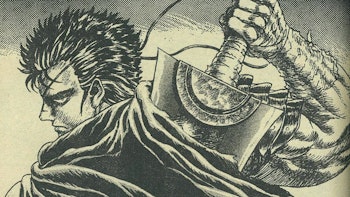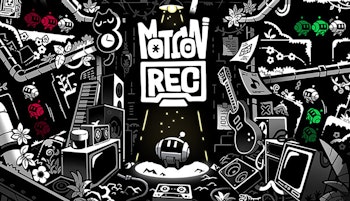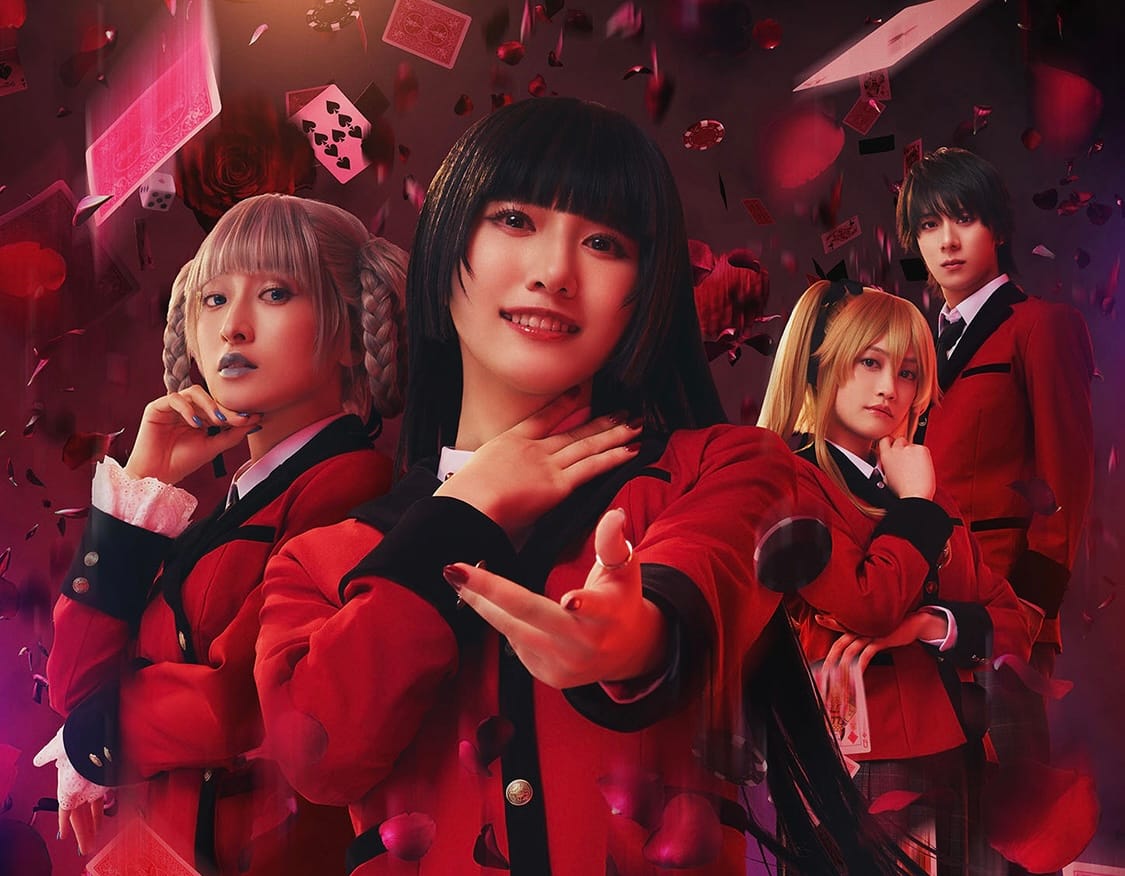
Kakegurui is a series that has always embraced its inner insanity, regardless of medium. Originally released as a manga in 2014 and still serializing to this day the series’ crazed-yet clear, detailed visual style instantly sold its elevated presence of a school hierarchy based on gambling (otherwise mostly illegal in Japan). It’s story thrilled by pushing its characters to the brink on the orgasmic ecstasy of a high-stakes game of chance fueled by a heavy dose of sexual energy and BDSM imagery. With the threat that those who lose all their money are forced to become servants and pets, you’ve created a world just crazy enough that it’s impossible to look away from.
The anime at its best brought motion to the charged panels of the original, and its brightly-colored canvas, hysterical screams and voice acting remain a face for the series globally. In live-action, where the series has become a TV drama and two live-action films, bringing them to the real world unleashed their actors to channel their inner character actor and go far beyond the bounds of realism for an over-the-top cacophony that, to me, remains arguably the best adaptation of the original material. The only medium it was yet to reach was the stage. But could Kakegurui even work as a stage play? Perhaps even a musical?
The series took to Tokyo’s Theater H earlier this month to ask this exact question, helmed by an impressive cast of actors and idols alike. To catch up those unfamiliar, the story takes place at Hyakkaou Private Academy, an elite school where only the wealthiest and most privileged attend. In this gamble-fueled social hierarchy only the best serve on the student council, while the worst are tormented at the bottom of the ladder with little hope for redemption. Thus, not only is winning important, but currying the favor necessary to tilt the odds in your favor can be crucial. If you have a game where the students around you can tilt the odds, you want them on your side.
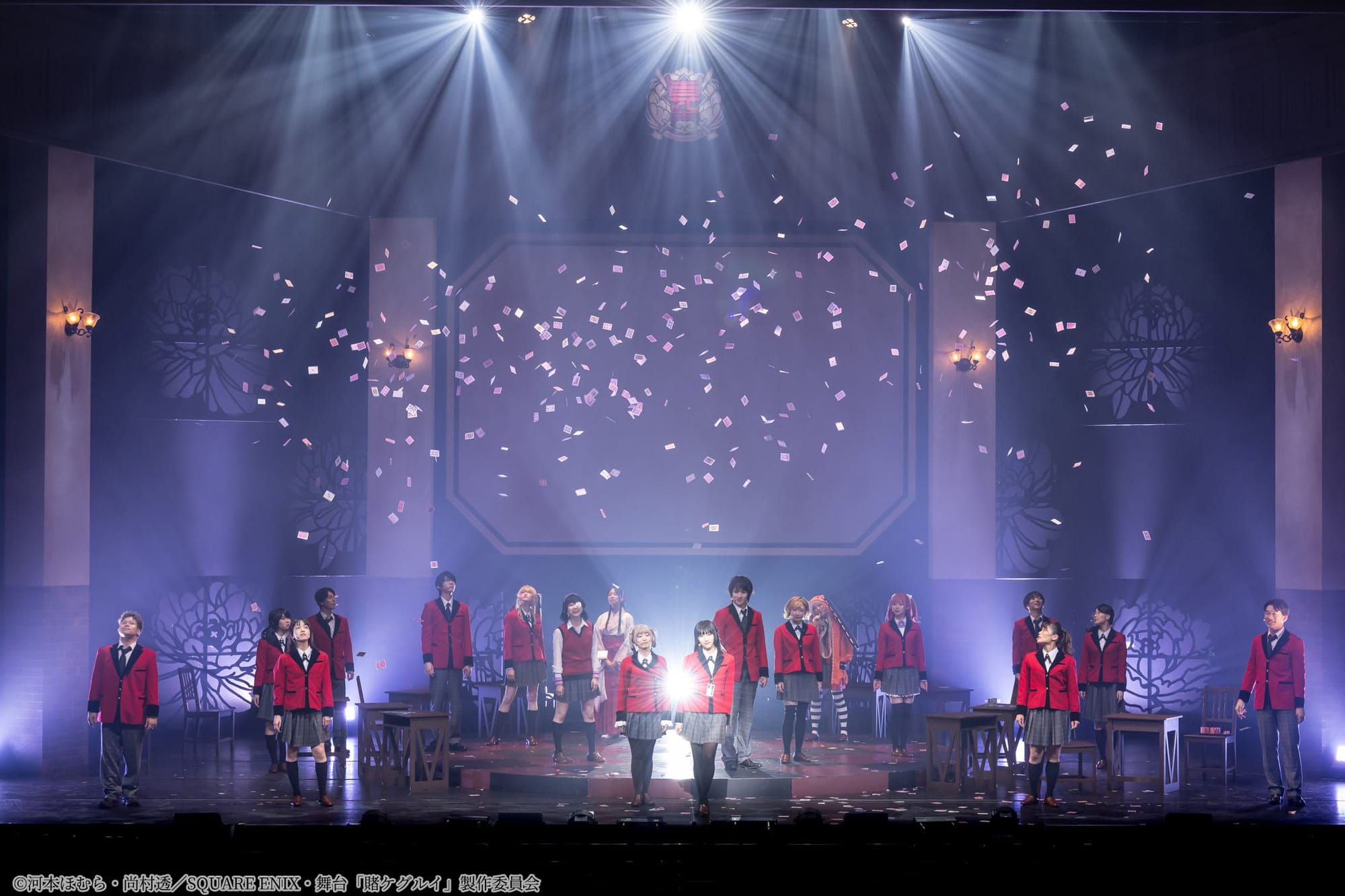
Naturally, with such high-stakes, high-money games deciding every aspect of life for pre-pubescent brains of the ultra-wealthy, students are far from well-adjusted. One day the curious Yumeko Jabari joins the school, a student whose outward innocence hides a compulsive gambler with a sadistic streak who could burn the system down for the thrill of a high-stakes bet.
As a stage play, the production was produced in partnership with the idol group ≠ME, a result that places Kanisawa Moeko as Yumeko and Murayama Yuka from sister group ≒JOY as Yumemita Yumemi, a student who lives a secondary life as an idol. Beyond that, the rest of the cast is filled with veteran actors of the stage and particularly 2.5D plays: Nagata Seiichiro as the male lead Suzui Ryota may be familiar to fans of Kamen Rider Gotchard, but he’s also appeared prominently in musicals adapting Prince of Legend and Touken Ranbu, while Otome Mary is played by Koizumi Moeka, a cast member of Love Live Nijigasaki High School Idol Club also involved in the Revue Starlight media mix and Bloom Into You stage play.
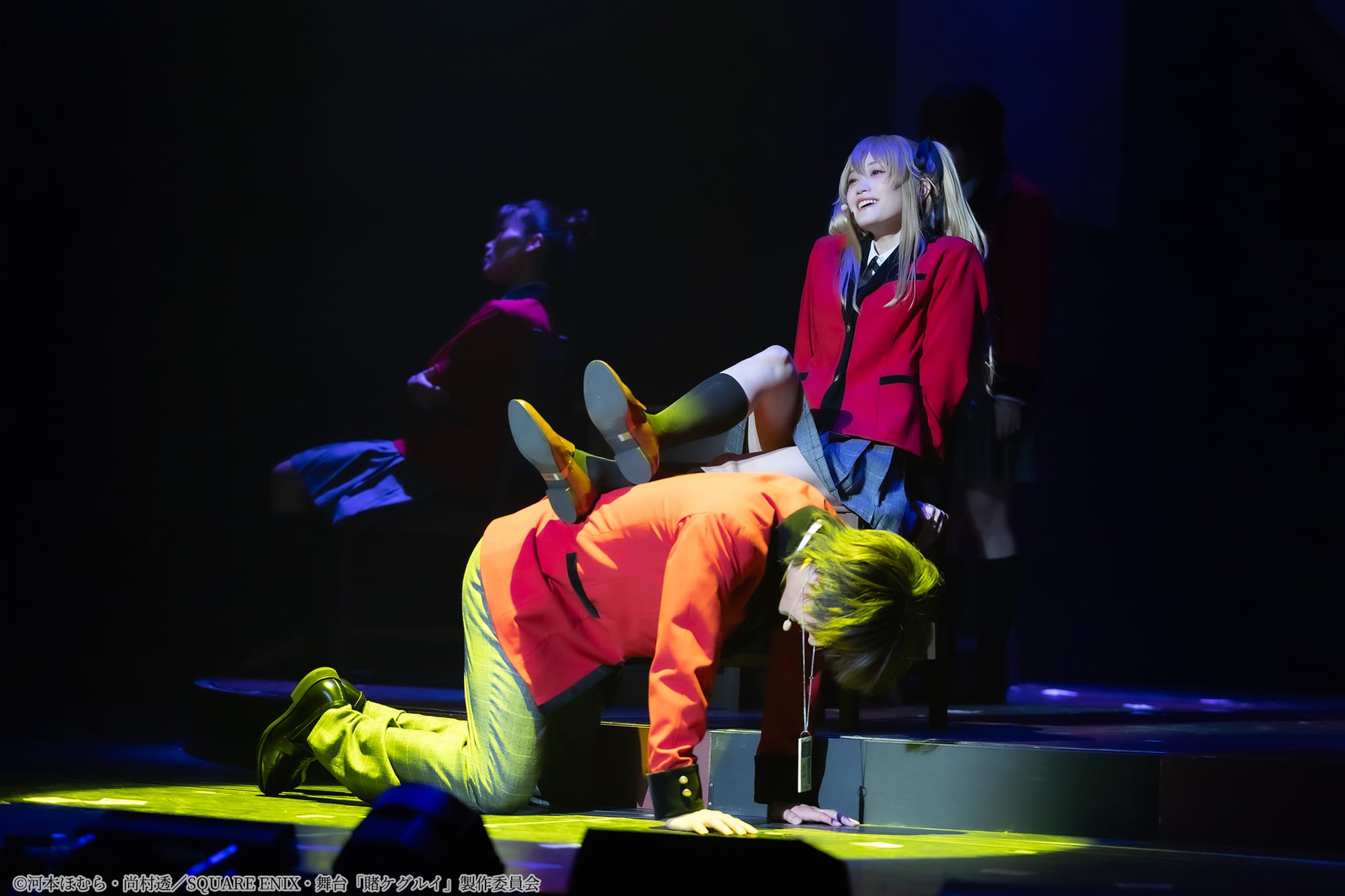
Kakegurui already needs to overcome the disadvantage facing any adaptation to the stage as it takes on the challenge of adapting a still-running now-19 volume manga into an already-longer-than-normal 3 hour show (plus a 15 minute interval). Many 2.5D musicals get around this by serializing their stories, taking advantage of built-in fanbases to limit shows to core fans with long-running stories performed an arc at a time, knowing that performances being hosted in major cities alongside accessibility to live recordings will allow people to jump in whenever and for the show to sustain itself. Still, how much of a series do you adapt in a single show? And how do you go about doing that?
This show tells a modified and condensed version of the first few arcs and major gambling events of the manga, priming itself for an if-successful serialization. This means we aren’t facing a showdine with the intimidating blue lipstick-touting school council leader Kirari Momobami no matter how much their interest in the other is made clear, but allows for a crescendo finale against the power-hungry Kaede Manyuda. He’s a glasses-touting member eying the throne and sees victory and Yumeko as a chance to curry influence, watching her from afar to pounce when the moment is right.
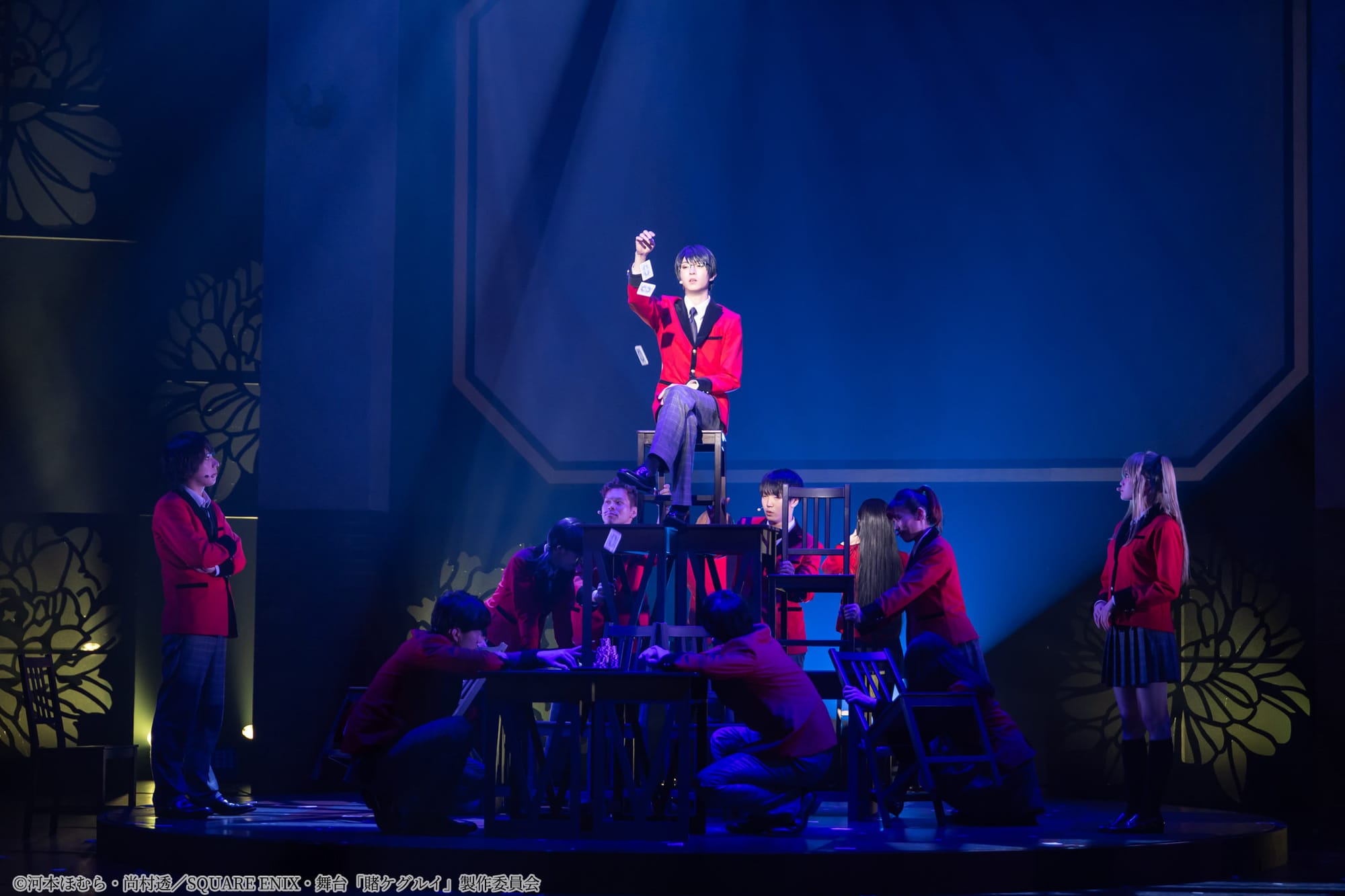
Along the way we’re introduced to the world of Kakegurui and undergo numerous high-stakes gambles that turn enemies into allies while acclimatizing its audience with the spiraling intensity of the series. To aid at this, it adapts Kakegurui into a musical, befitting its idol cast and talented ensemble. This condenses lengthy gambling matches effectively into high-tension songs that match the internal back-and-forth and excitement of these matches through music, and place the audience into the giddy minds of its characters. It can also use simple staging relying mostly on school chairs serving multiple purposes as gambling tables and more, alongside a single turntable colored like a roulette wheel, to craft a universe..
Take the opening gamble. After an opening theme song, the series spends no time placing Yumeko into battle against school council member Otome Mary for a game of modified rock-paper-scissors. It could be easy to bog the game down in rules and tedious card games at this point (the game requires the choices be picked from hand-written cards from other students), but is instead made electrifying through a rhythm and intensity matching the ups and downs of the battle itself. There’s enough of a chaotic edge to make a strong first impression without losing itself, while condensing this long match into a brief yet thrilling three minutes.
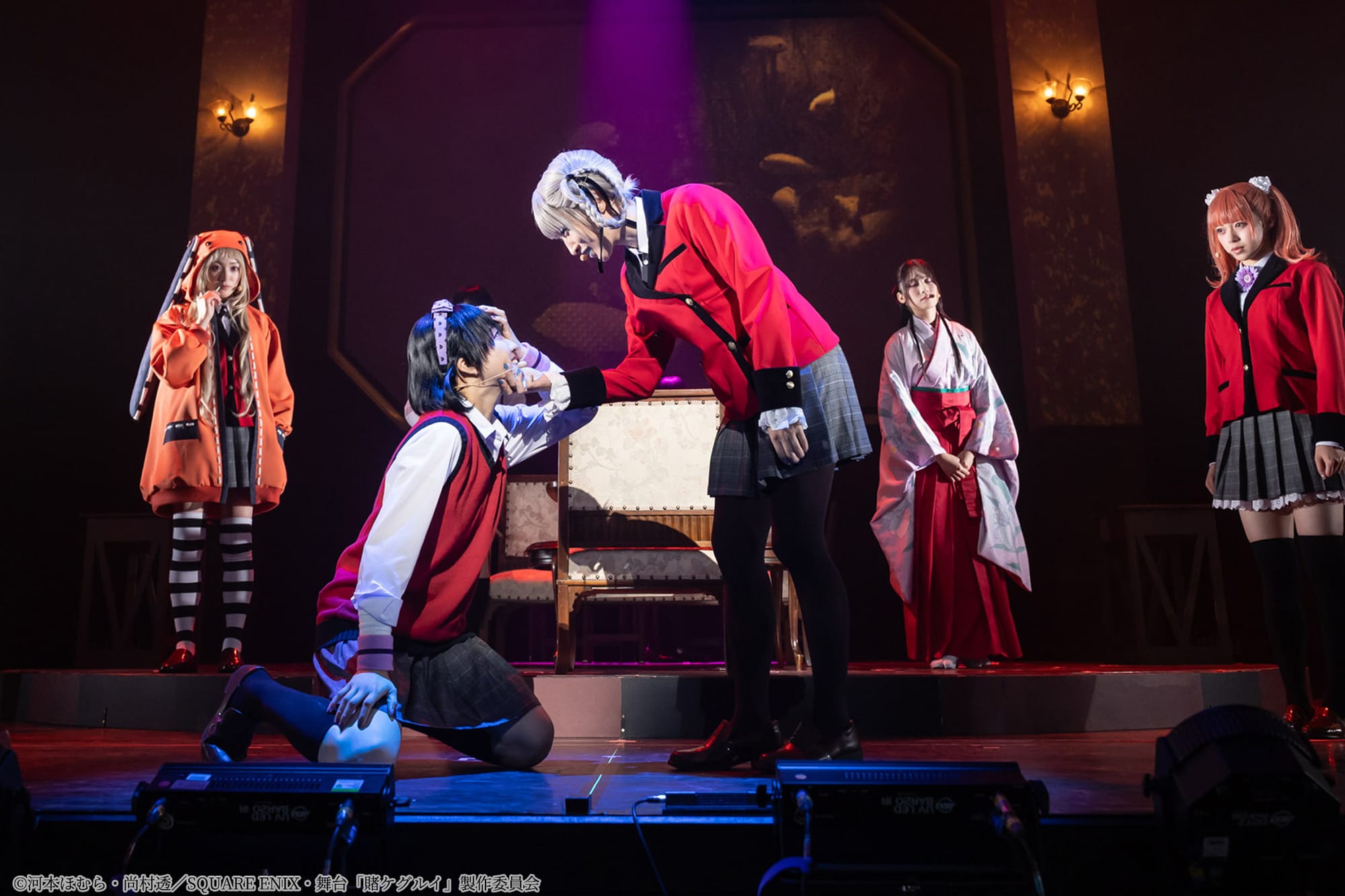
The time saved through musically-choreographed gambling is used to flesh out the characters and understand what has messed with their minds and draws them to each other and this unusual lifestyle. It avoids the play being a greatest-hits for fans only and turns it into a story anyone can enjoy, especially when songs or these moments of introspection elevate a character. It’s hard not to call Oto Kurisu’s turn as Ikishima Midari a highlight of the show, the former prim and proper Takarazuka Revue musumeyaku showing a very different side to her as the most unhinged character in an already-beyond salvation cast.
The physicality of the way she tosses herself across the stage with abandon and embraces the violence-over-money of her deadly gambles with the pain embodied in her self-inflicted stab wound to her blindfolded eye is dazzling. She truly loses herself inside the character’s mind to the point it’s hard to tell where performances begin and end, stealing each of her scenes. Even the show’s pacing recognizes this, placing her star turn and gamble around the show’s interval.
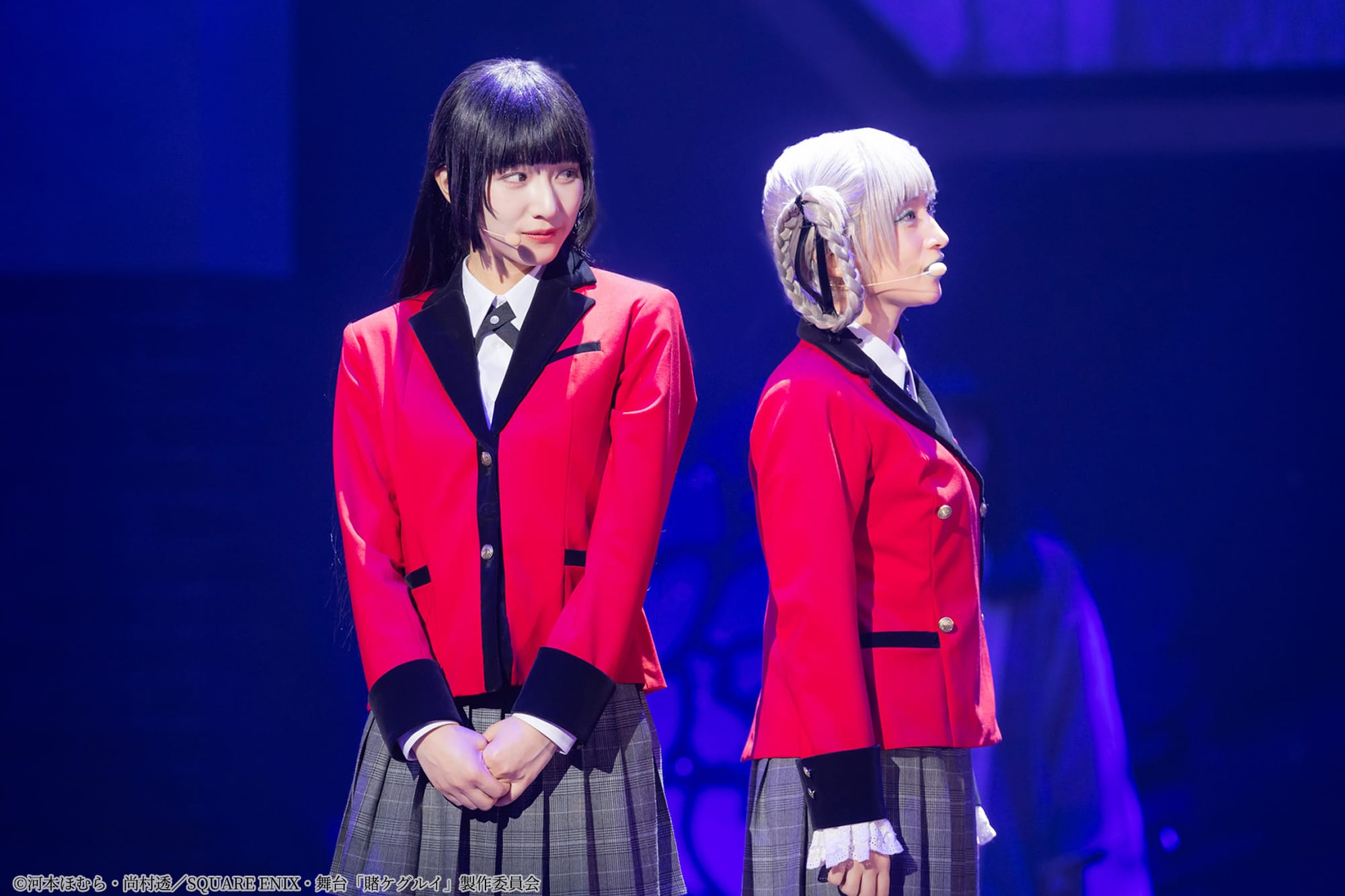
Three hours may be long for a musical, but with great songs and acting even from its less-experienced idol stars, it soon flies. By embracing rather than avoiding the series’ over-the-top antics and taking advantage of the full theater by acting through the aisles of the theater itself to involve the audience, nary a dull moment passes. It’s far from perfect, especially considering the breakneck pacing and the idol gambling sequence centering Yumemita Yumemi that adds little to the show, but these are minor issues. It’s awe-inducing to see Kakegurui transformed like this, tailoring the show for the stage beyond the typically-strict authenticity of most 2.5D musicals to ensure it can survive the jump. if this does become serialized, I think I’ll be back for more.
Although the show’s theatrical run in Tokyo has come to a close, the stage musical has already announced plans to be coming to Blu-ray early next year, with streaming archives still available. I’m glad this show has the chance to form a legacy in this way, as it deserves to stand alongside any other adaptation in the franchise as a worthy representation of its unique (if-unhinged) premise. Let’s gamble!
